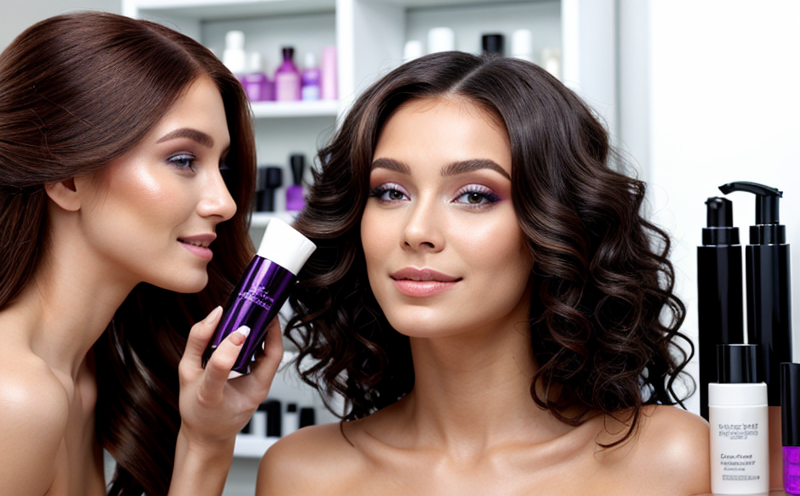Residue Evaluation Testing in Hair Styling Cosmetics
In the realm of hair care product development and quality assurance, residue evaluation testing plays a pivotal role. This service ensures that the cosmetic products being developed or produced meet stringent standards for safety, efficacy, and consumer satisfaction. Residue evaluation specifically targets the buildup of styling products on the hair shaft after use. This process is crucial as excessive residues can lead to various issues such as hair damage, scalp irritation, and reduced product performance.
The testing procedure involves applying a sample of the hair styling cosmetic onto a set of human hair samples under controlled conditions that mimic real-world usage scenarios. Post-application, the samples are processed in a manner that simulates the natural cleansing process. This could involve washing with water or using a mild shampoo followed by thorough rinsing.
The primary goal is to quantify the amount of residue left on the hair strand after cleaning. This is typically measured using advanced analytical techniques such as spectroscopy, chromatography, and gravimetric analysis. The results provide critical insights into the product's formulation, helping developers understand how well their products are being removed from the hair during use.
Residue evaluation testing also helps in identifying potential ingredients that might contribute to persistent residues. By isolating these components, formulators can refine their formulas to enhance solubility and ease of removal. This not only improves consumer experience but also enhances brand reputation by ensuring high standards of product safety and effectiveness.
A key aspect of residue evaluation is the understanding of how different ingredients interact within the formulation. For instance, silicone-based products are known for their excellent styling properties; however, they can often leave a film that could be difficult to remove fully. Testing helps in balancing these benefits with ease of removal, ensuring that consumers reap the maximum benefit from each application without facing adverse effects.
Furthermore, residue evaluation testing is essential for regulatory compliance across various regions like Europe (Cosmetic Regulation), United States (FDA guidelines), and China (Technical Specification). These regulations mandate specific limits on certain ingredients to prevent harmful residues. By adhering to these standards during product development, manufacturers can avoid costly recalls and legal issues.
Real-World Applications
- Formulation Optimization: Identifying which components of the formulation contribute most significantly to residue formation allows for targeted adjustments. This could mean modifying emulsifiers, thickeners, or even colorants.
- Packaging Design: Understanding how residues interact with packaging materials can inform decisions about container types and closures that minimize exposure time to air and light, thus reducing degradation of active ingredients.
Why It Matters
The importance of residue evaluation testing in hair styling cosmetics cannot be overstated. It directly impacts consumer health and satisfaction, brand reputation, and market competitiveness. Consumers today are more discerning about the products they use daily, especially those that come into contact with their skin and hair. Ensuring that residues are effectively managed demonstrates a commitment to customer well-being.
From an industry perspective, meeting regulatory requirements is not just compliance but also a strategic move towards gaining market acceptance. Countries like China have stringent regulations regarding the amount of residue allowed in hair care products. Failing to meet these standards can result in product bans or withdrawal from the market altogether. Therefore, residue evaluation testing becomes a cornerstone of successful product launches and sustained brand loyalty.
Moreover, consumers’ increasing awareness about environmental sustainability means that brands are expected to produce eco-friendly products. Effective residue evaluation helps in creating formulations that are not only safe but also biodegradable, contributing positively to the environment.
Quality and Reliability Assurance
- Consistency: Residue evaluation ensures consistent performance across batches of products. By standardizing testing protocols, manufacturers can ensure that every batch meets the same high quality standards.
- Durability: Testing helps in understanding how long residues persist on hair strands post-cleaning. This information is invaluable for predicting product longevity and effectiveness over extended periods.
Competitive Advantage and Market Impact
- Consumer Trust: Demonstrating a commitment to thorough testing builds trust among consumers, which is crucial in fostering brand loyalty.
- Innovation: Advanced residue evaluation techniques often lead to innovations that set brands apart from competitors. These advancements can open new market opportunities and enhance overall product performance.





